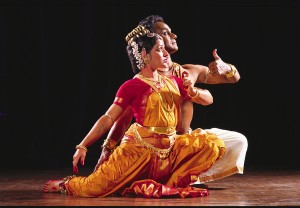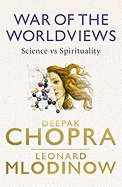INDIA ~ Been there, Done that…

India of the past was a world leader in both the sacred and the secular. Modern achievements seem to just exaggerate what India achieved before the invasions. What Indians called ‘Gurutvakarshan’, Newton rediscovered it as gravity only after a millennium. India’s past points out to the vast knowledge, experience and intelligence in all fields of human endeavor. Indian history helps us find out who we are, how we got to where we are now and where we might be heading.
India’s past is not dead. Its still operates in the present. But it seems fashionable to dismiss the historical past as ‘Jo hua so hua – what can we do now?’ In our vanity of being psychologically advanced we tend to ignore history. This attitude is strange given that ‘we are what we are’ because of our historical past.
Indian history is not just about dates of kings and queens, ‘battle of Plassey and all that’. It’s a history of a civilisation that dates back atleast 10,000 years with an equally antiquated philosophy.
As Dr.S.Radhakrishnan put it ‘The Civilisation of India is an effort to embody philosophical wisdom in social life’.
All our religions and religious practices are from the past. Even our names and family names are from the past. We know ‘angrezi’ because of the ‘angrezi’ occupation of India that happened in the ‘past’. Someone is a Medical doctor because he/she studied medicine in the ‘past’. However this is no petition to get stuck in a bygone era and brood over it, but only to learn from it – to regard the past as a rear-view mirror and being in the present looking at the future. No doubt the present determines the future but the present will also become past in the future. As it is said, today will be yesterday tomorrow as we are living in tomorrow’s past.
These days people are even getting regressed into their ‘past’ lives as a therapy. There has been a paradigm shift in religious belief systems due to the overwhelming evidence in modern psychiatry about ‘past’ life regression. Prominent mainstream psychiatrists like Dr.Brian Weiss have healed people by exploring their ‘past’ lives. His many books like the ‘Many Lives Many Masters’ are just enough proof.
Alluding to the incredible lessons that past teaches us, the great American philosopher and historian Will Durant said ‘The past is not dead; it is the sum of the factors operating in the present. The present is the past rolled up into a moment for action; the past is the present unraveled in history for our understanding. Therefore invite the great men of the past into your homes.”
Ancient Indian civilization has some terrific life-lessons for the world. If facts would start speaking, it would say that India in her zenith has practically ‘BEEN there – DONE that’ in areas – sacred and secular. This is no holler for any Indian supremacy but only a decent account of a bygone era. In fact, the lessons from ancient India are more significant today than ever, especially when India and Indians outlandishly follow a lifestyle that is ‘NA GHAR KA NA GHAAT KA’ in an atmosphere of hurried modernization. The GHAR ka wisdom with the eco-friendly lifestyle were solid in foundation, yes…with some paint peel-offs which got tended to from time to time.
The grandeur and the glory got hidden in the last 1000 years, when India got pauperized in an era of calamitous political slavery. During this time, the splendor of India was deliberately trodden, maligned and eventually went underground (some literally). Perhaps it was the price India paid for being nice to the ‘paschimi’ nomads, tradesmen and the despotic Mughals (the Persian word for Mongol is ‘Mughal’).
In 1930, even an objective and honest book like ‘The Case for India’ by Will Durant was banned by the ‘angrez’ in India because they feared the book would create an intellectual awakening instigating a journey back to freedom and richness. In 1931, Tagore mentions in his response to Durrant’s book: ‘The dark facts of our bankruptcy are evident to any casual visitor, but the truth which is permanent in the spirit of the people must be explored in the history of our past.”
Tagore advised “A critical search should be made to find out the nature of the accidents that are responsible for the present condition of the country which once had the dangerous reputation of a fabulous wealth attracting round her treasure-house adventurers from distant shores.” The loot that happened during the 1000 years – uska koi hisaab nahin.
Many such treasure-house adventurers were simply awestruck with India’s wealth and wisdom but very few had noble intentions. Even scheming Orientalists like Max Muller had to finally admit saying “If I am asked which nation had been advanced in the ancient world in respect of education and culture then I would say it was – India”.
Of the travelers who visited ancient India, Megasthenes (3rd century BCE) from Greece, Fa-Hein (3rd century CE) and Huan Tsang (c. 7th century CE) from China, Alberuni (10th century CE) from Persia provide some fascinating accounts about India in their travelogues. They came with a quest to know India, as India was at the centre of much scientific and spiritual advancement being a seat of learning. Fa-Hein and Huan Tsang have given particularly glowing accounts of the big universities of Nalanda and Taksasila where more than 10,500 students from all over the world studied more than 60 subjects.
The visitor’s travelogues offer plenty of insight about ancient Indian science, philosophy, justice and lifestyle. Besides these accounts there is plenty of empirical evidence for the scientific minded. Fourteen branches of learning called ‘Chaturdasa-vidya’ were taught in India from the remote past until the inception of ‘angrez’ rule as confirmed in the copper-plate inscriptions dated 868 CE in Tamil Nadu.
Eminent historians, philologists, archaeologists and even modern day scientists have been overtly explicit about India’s past glory in their writings. Grant Duff the British Historian of India confirms “Many of the advances in the sciences that we consider today to have been made in Europe were in fact made in India centuries ago”.
Mahatma Gandhi in 1908 said “I believe that the civilization India evolved is not to be beaten in the world. Nothing can equal the seeds sown by our ancestors, Rome went, Greece shared the same fate; the might of the Pharaohs was broken; Japan has become Westernized; of China nothing can be said; but India is still, somehow or other, sound at the foundation.”
If such was the glory of India, what use is it now? Past can’t be recreated but the lessons and knowledge can certainly be applied in today’s worldl.
The tribute now would be to blend the good Indian past into the present as Nehru observed about Swami Vivekananda –
“Rooted in the past, full of pride in India’s prestige and yet modern in the approach to life’s problems.”






